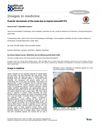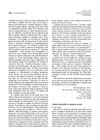Histologic Response to Topically Applied Minoxidil in Male-Pattern Alopecia
October 1988
in “
Clinics in Dermatology
”

TLDR Minoxidil can help grow hair and make hair follicles bigger, but it can also cause side effects.
This document summarizes various studies that examine the effects of topically applied minoxidil on male-pattern alopecia. The studies found that minoxidil treatment can increase hair follicle size, decrease the percentage of follicles in the telogen phase, and promote hair growth by reversing the miniaturization process in hair follicles. However, the studies also noted some side effects, such as inflammatory reactions and fibrosis. Overall, the studies suggest that minoxidil can be an effective treatment for male-pattern alopecia.



